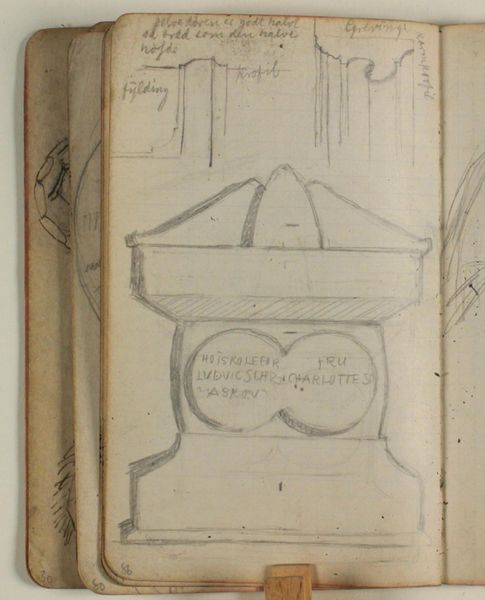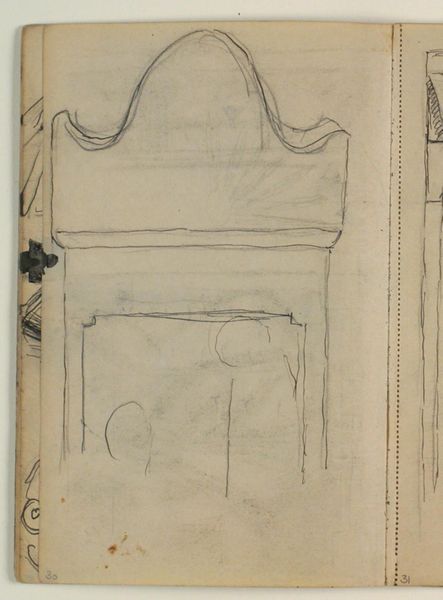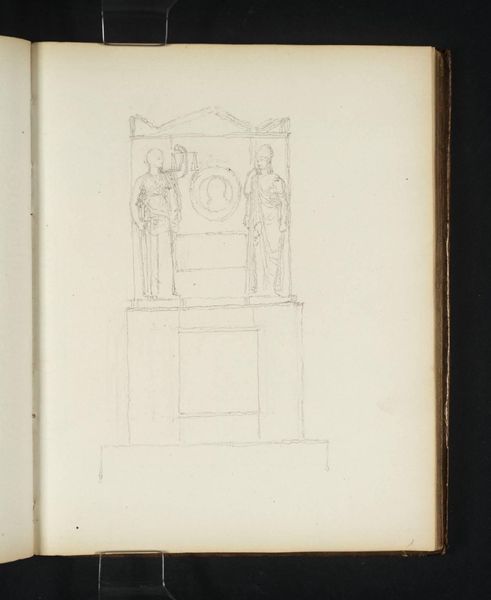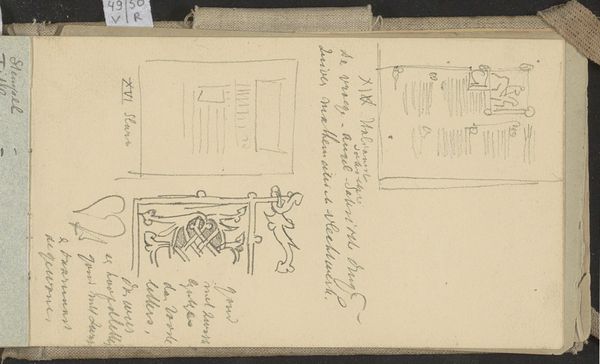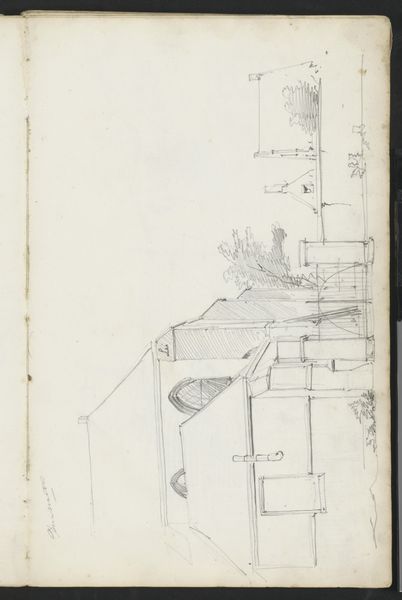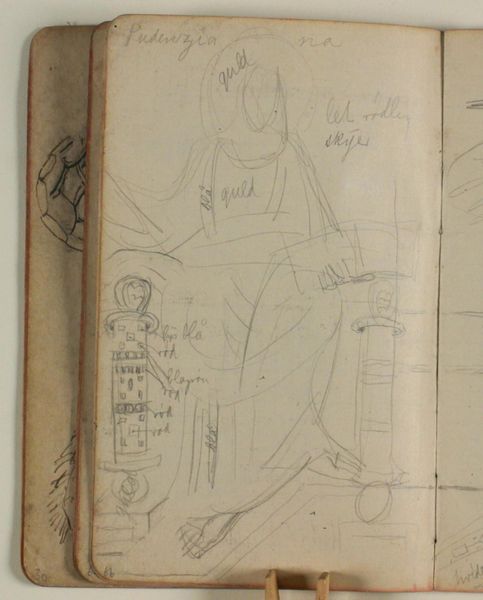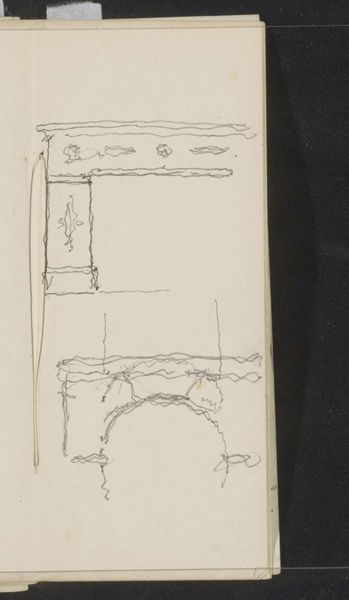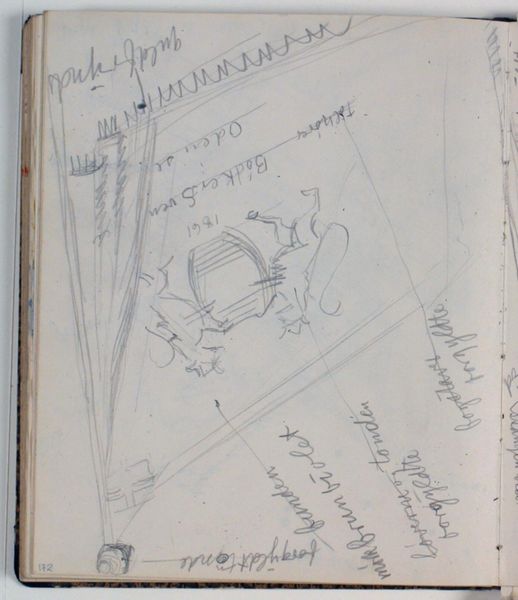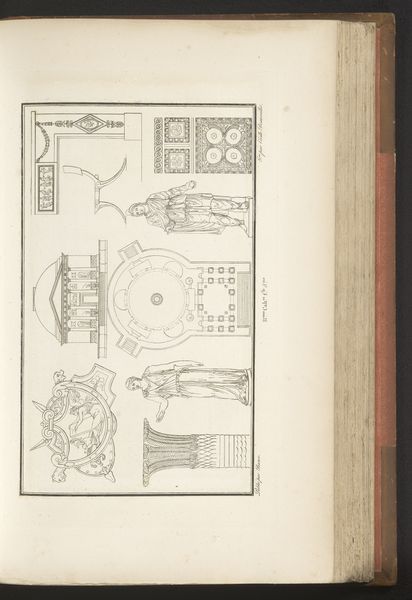
drawing, paper, pencil
#
drawing
#
paper
#
ancient-mediterranean
#
pencil
Dimensions: 161 mm (height) x 96 mm (width) (bladmaal)
Curator: Immediately, I notice the sketch's almost ghostly lightness, that ethereal quality of pencil on paper suggesting memory and longing. It's so immediate. Editor: That feeling resonates deeply with the intent behind these drawings. We're looking at a sketchbook page displaying Niels Larsen Stevns's designs for gravestones. These sketches date from between 1906 and 1910. Curator: The prominent use of "PAX" really grabs me—peace, that universal hope. Is this drawing consciously pulling from antiquity, and using it as a kind of shorthand? Editor: Precisely. Stevns explicitly referenced ancient art, drawing upon classic motifs to instill dignity, hope, and, dare I say, cultural legitimacy to this new century. His art consistently wrestles with history to give voice to very modern yearnings. Curator: Look at the architectural details. Each small pediment and pillar speaks volumes. These classical symbols carry millennia of meaning; do you see them specifically speaking to a desire for a specific kind of return? Perhaps an idealized national past? Editor: That's astute. There's no denying the era's fascination with myth-making, with using historical imagery to shape a cohesive cultural identity. "PAX" speaks to something greater still – peace within oneself. Curator: This intimate format lends another layer of meaning; glimpsing the artist's working process, thoughts yet unfinished—this hints at vulnerability even in the face of monumental concepts like death and remembrance. The human story, mediated through time. Editor: Seeing it in its sketchbook context illuminates Stevns’ creative path. Here, the drawing process isn't merely functional, it’s an active and profound form of research. That we can still access the emotional current of such searching through simple marks, is quite moving, I think. Curator: Absolutely. The pencil whispers across time, connecting our modern anxieties with the artist’s own. It creates a bridge. Editor: It makes one reconsider the ongoing dialogue we have with the departed – how we honor their memory in the physical landscape.
Comments
No comments
Be the first to comment and join the conversation on the ultimate creative platform.
